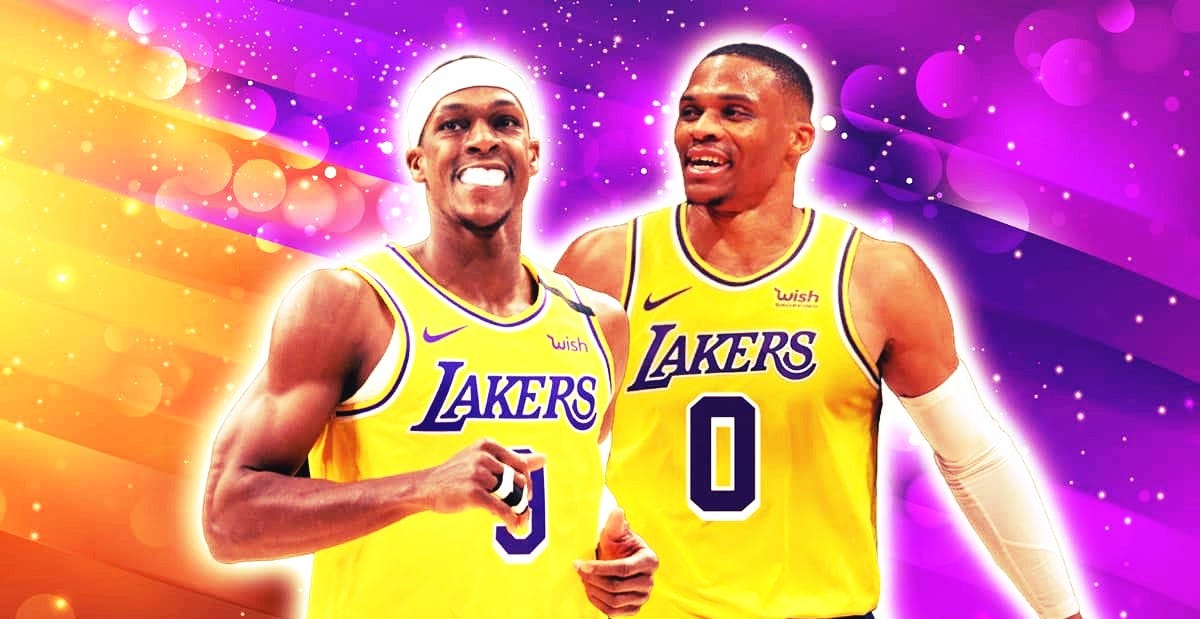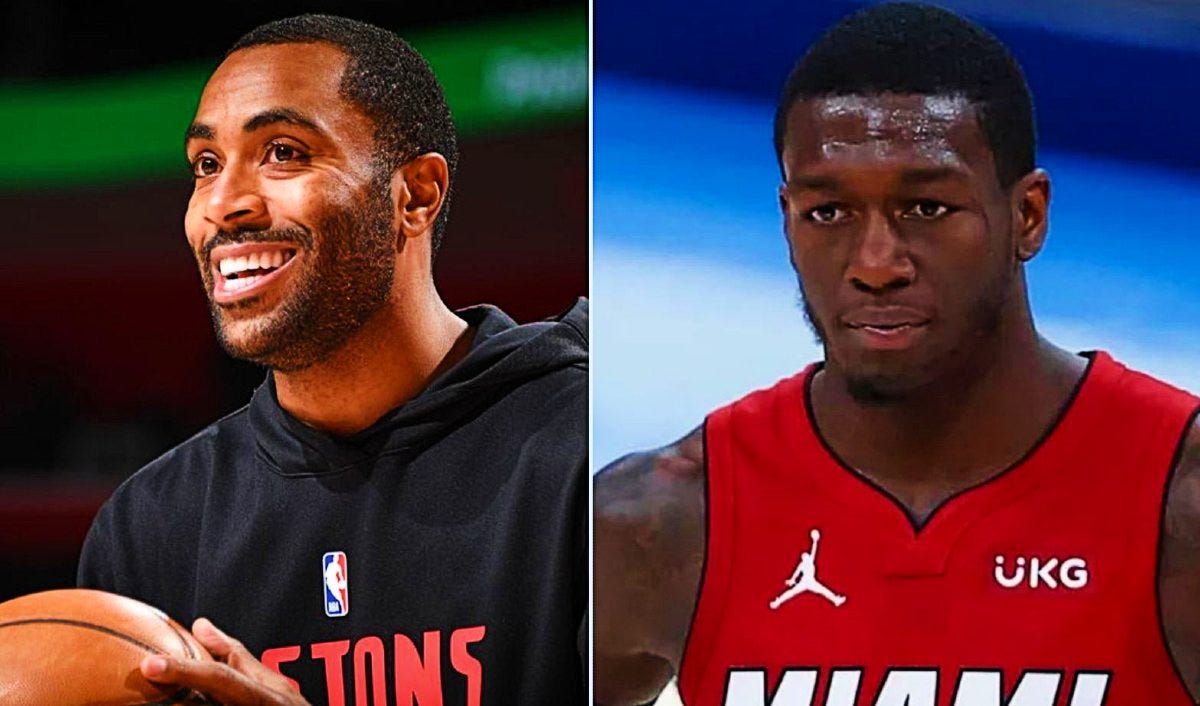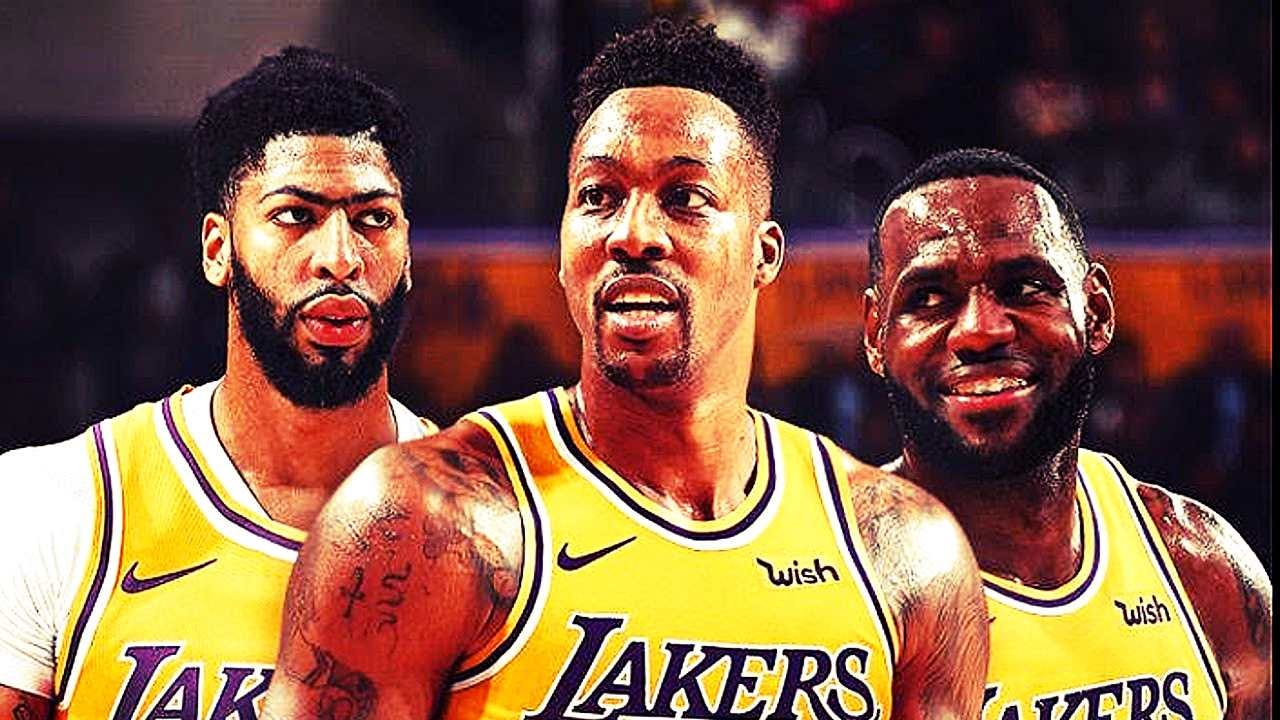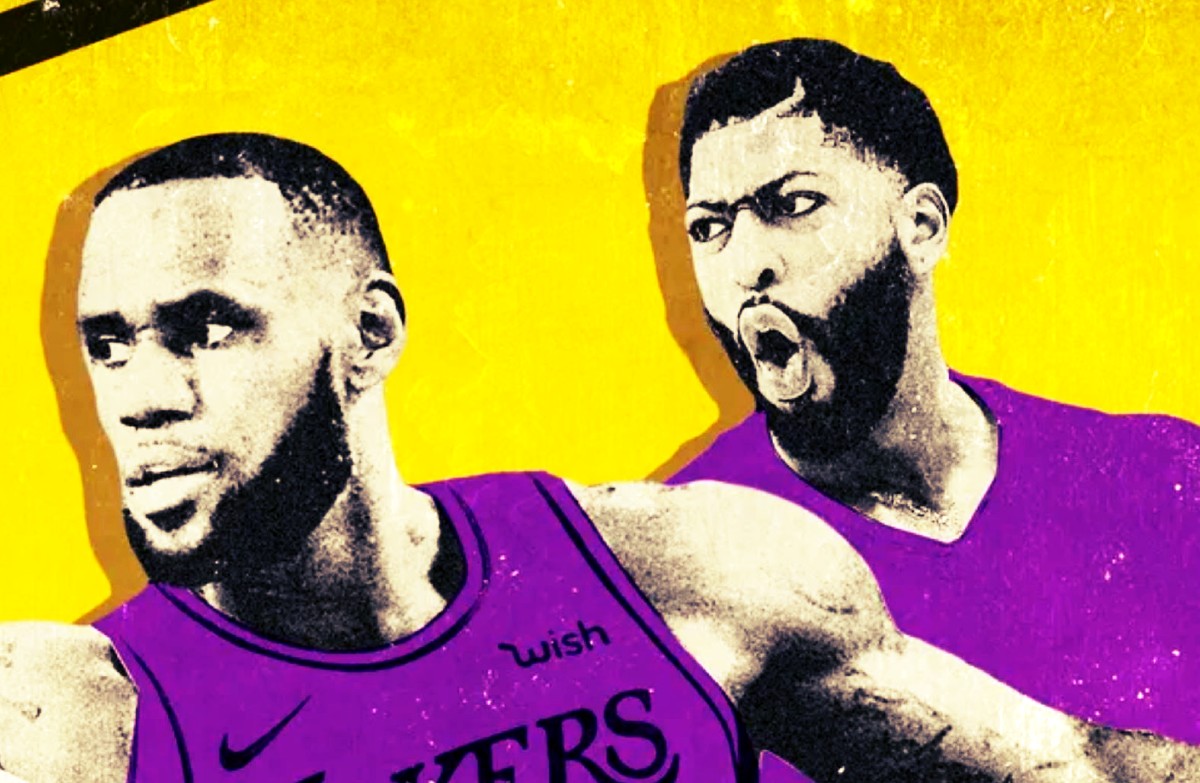After an injury plagued season, dismal first round exit, and 24th worst offensive rating, the Lakers revamped their entire roster in an extreme makeover to transform their offense into a potentially lethal juggernaut.
Aside from superstars LeBron James and Anthony Davis, 20-year old guard Talen Horton-Tucker appears to be the only other player the Lakers are bringing back from their 2020–21 roster, assuming Marc Gasol’s also gone. The extreme makeover confirms the Lakers didn’t believe they could win with last year’s roster or that they had enough offensive firepower to keep up with the emerging superteam the Brooklyn Nets have put together.
While the Lakers may have ignored players from last year’s roster, they were not afraid to bring back several key players from their bubble championship team, including star point guard Rajon Rondo and center Dwight Howard. They also didn’t hesitate to dip into their own history and bring back several former Lakers players who are excellent fits for what the they need right now, including veterans Kent Bazemore, Wayne Ellington, and Trevor Ariza.
The Lakers upgraded six offensive areas in their makeover: volume 3-point shooting, better playmaking, more lobs and dunks at the rim, enhanced offensive rebounding, faster transition offense, and more shot creators.
1. PLAYMAKING TO FREE LEBRON TO PLAY OFF THE BALL

The Lakers number one goal this offseason was to find a ‘difference-making playmaker’ so LeBron James could evolve from the team’s defacto point guard and to full-time power forward to save energy and extend his career.
The mega trade for Russell Westbrook opened the door for the Lakers to add a legitimate third superstar, something that’s extremely valuable over a long season and empowers them to matchup better against the Brooklyn Nets. Most importantly, the trade allows the Lakers to finally move LeBron James to the four and Anthony Davis to the five, the positions at which they play the best and the team’s lineups excel both offensively and defensively.
While Westbrook exacerbates rather than helps solve the Lakers need for more and better 3-point shooting, the opportunity to add a dynamic third superstar who averages a triple-double like he does could not be passed up. What Russ brings in the form of relentlessness, energy, and explosivelness at both ends more than offsets the additional pressure he brings for more high volume, high percentage 3-point shooting to create spacing.
Re-signing Rajon Rondo, third best player in their championship run in the bubble, completes the Lakers’ plan to upgrade team playmaking not only to reduce the workload on LeBron but also to win the minutes when he rests.
2. VOLUME 3-POINT SHOOTING TO CREATE SPACING

Once the Lakers decided to go all in on a third superstar by trading for Russell Westbrook, Rob Pelinka’s focus immediately shifted to looking for high volume, high percentage 3-point shooters to create spacing.
Assuming Westbrook would play the one, James the four, and Davis the five, Pelinka focused on adding players who could play both the two and three, assuming those were the positions to dedicate to volume 3-point shooters. The Lakers signed six tested and proven veteran 3-point shooters who could play the two or three and who take a high volume of threes and make them at a high percentage to create spacing to unleash their three superstars.
The Lakers’ new corps of 3-point sharpshooters includes Wayne Ellington, who shot 42.2% on 6.0 threes per game, Kendrick Nunn, who shot 38.1% on 5.7 threes per game, and Malik Monk, who shot 40.1 on 5.0 threes per game. Other 3-point shooters include Carmelo Anthony, who shot 40.9% on 4.7 threes per game, Trevor Ariza, who shot 35.0% on 4.8 threes per game, and Kent Bazemore, who shot 40.8 on 2.7 threes per game.
With three superstars who are subpar 3-point shooters, the Lakers are not going to suddenly become a top-ten 3-point shooting team but they have the players to take and make a lot more threes than the last two years.
3. VERTICAL GRAVITY OFF LOBS AND DUNKS AT THE RIM

The Lakers attempted to upgrade their offense after winning their 17th championship by replacing traditional low post centers JaVale McGee and Dwight Howard with offensive centers Marc Gasol and Montrezl Harrell.
Unfortunately, that move undermined the Lakers’ rim protection and also reduced the number of dunks at the rim by all of their centers, including Anthony Davis, Marc Gasol, Montrezl Harrell, and Andre Drummond. During their championship season, the Lakers led the league with 528 dunks. Last year, they had only 342 dunks, which represented a 35% decrease or 186 fewer dunks even though they carried four different centers on the roster.
While there’s no discernable proof that teams who dunk more win more, the Lakers strongly believe their dominating front court, demoralizing dunks, and physical bully ball style of play were part of their championship puzzle. Dwight Howard’s return, DeAndre Jordan’s signing, LeBron James’ move to power forward, and Anthony Davis’ increased minutes at center should all contribute to the Lakers bouncing back and leading the league in dunks.
The Lakers are clearly reverting back to the bully ball and physical play formula that won their bubble championship. They intend to lead and intimidate the league in blocked shots a dunks thrown down a the rim.
4. OFFENSIVE REBOUNDING AND DOMINATING THE GLASS

Just as the loss of McGee and Howard resulted in less rim protection on defense and vertical gravity on offense, the Lakers’ offensive rebounding stats declined with Gasol, Harrell, and Drummond at center last season.
During their championship run, the Lakers were 7th in the league in offensive rebounding with 10.7 offensive boards per game. Last season, with a new center corps, they fell to 17th with 9.7 offensive boards per game. With LeBron at the four and AD at the five and two backup centers in Howard and Jordan who have histories of being aggressive rebounders, the Lakers should be ready for a big bounce back in offensive rebounds.
Dominating the glass offensively can be demoralizing as a team can play great defense for 24 seconds only to see their opponent grab an offensive rebound and get another 14 seconds to attack the defense and try to score. Dominating the glass defensively is the key to the Lakers’ ability to score in transition offense as teams need the ball in order to run. The Lakers’ fast break starts with somebody on the team grabbing the ball and running.
The Lakers’ goal is to dominate the glass at both ends of the court, grabbing defensive rebounds to trigger transition fast breaks on offense and snagging offensive rebounds to generate second chance points on defense.
5. LEAGUE LEADING TRANSITION AND EARLY OFFENSE

During the 2019–20 championship season, the Lakers played at a 101.20 pace, which was the 7th best pace in the NBA that year. Last season, the Lakers pace dropped to 98.85, 21st out of the 30 teams in the league.
The single biggest change the Lakers will experience this season after trading for triple-double point guru Russell Westbrook is a dramatic increase in the team’s pace and points in transition or early offense opportunities. Last season, Westbrook posted a triple-double of 22.2 points, 11.5 boards, and 11.7 assists in 36.4 minutes per game with a league. With his relentless energy, Russ led the run-and-gun Wizards to a league best pace of 104.67.
Besides playing at a faster than normal pace, the Lakers have been one of the most efficient transition teams, scoring on a 3rd best 52.9% of chances last season and on a 4th best 52.2% of chances in their championship run. The addition of Westbrook should only add to the Lakers’ efficiency in creating transition and early offense opportunities. No NBA team can match the Lakers fast break. They will literally reprise their Showtime days.
The Lakers should lead the NBA in transition opportunities and execution with elite fast break playmakers like Russell Westbrook, Rajon Rondo, and LeBron James attacking the rim, dishing out dimes, and finishing dunks.
6. MULTIPLE SCORERS WHO CAN GET THEIR OWN SHOT

The final area of offense the Lakers dramatically upgraded this offseason was adding proven big time scorers other than LeBron and AD capable of getting their own shots off the bounce when games were on the line.
Heading that list of players who could get their own high quality shot when needed are Carmelo Anthony and Russell Westbrook, two veteran scorers with a history of being able to get points for their teams down the stretch. Russ finished with 76.3% of his points scored in isolation and Melo with an 51.7% of his points in isolation. Both are proven veteran scorers with moves and handles to create high quality shots for themselves when needed.
Having two additional stars who are comfortable being isolated with the ball and able to create shots for themselves besides LeBron, AD, and Russ makes the Lakers offense much more dangerous and unpredictable. Teams won’t be able to double LeBron or AD like they were the last two years since they will have to respect Russ’ and Melo’s ability to beat their man off the dribble and create a high quality shot to close out games.
The addition of Russ and Melo have given the Lakers two more star scorers for teams to fear down the stretch of games besides James and Davis. It will be interesting to see whom the Lakers close games with this season.

It’s amusing to see you come full circle on Dwight Howard. From fully embracing and ridiculing anyone who dared feel otherwise after he chose the 76ers it’s like you then decided to, once he became a Laker, create the Dwight Howard Fan Club. Just a funny thing to me…
In terms of a statistical comparison of the roster it’s an exercise in opinion right now. The one and only thing we know is that LeBron and AD we’re not themselves all last season and the roster suffered a high number of injuries and games missed. So the only real wY to compare the 2 squads is to have AD and LBJ miss a ton of games. Basically, of this roster is healthy, they will fare. whole lot better than last seasosns.
My dislike for bringing Dwight back last season was a desire to instead either play AD at the five or go out and acquire a true stretch five like Myles Turner. To me, Turner or Cousins would have been my choices at center. That’s why I was against re-signing Dwight last year. Unfortunately, the move for Gasol and Harrell turned out to be a huge mistake that led to Drummond, even a bigger mistake.
Once it bacame obvious that we weren’t going to go with a stretch five, then rim protection became the next priority, something neither Gasol or Harrell could provide. Thus my support for Dwight. I will be happy also with Jordan, although I worry he does not have enough left in the tank. But the Nets went modern, prioritizing a stretch five, while the Lakers went with rim protection, which could be a difference maker in a Finals matchup.
Don’t know why you’re so perplexed. It all makes perfect sense to me. First priority, go modern. Once Frank fucked that up, then go rim protection. But no matter what, don’t make the fatal mistake of starting either Howard or Jordan. That would be the dumbest move we could make with three superstars who aren’t good 3-point shooters. Have to put a pair of volume 3-point shooters next to the Big Three. Anything else plays right into defense’s hands.
I’m still perplexed at how little impact everybody is expecting Russell Westbrook and all of the Lakers’ new additions to have on this team. Frankly, I expect the team to be among the top five both offensively and defensively.
When you look at the six areas highlighted by this article, it’s easy to see how much better this year’s roster is than last year’s roster or even the bubble championship roster. This team has better pieces at both ends of the court.
Most importantly, we should see Anthony Davis play a lot more center than the 10% he played during the regular season or 20% he played in the playoffs. We need at least the 40% he played the five during the regular season and 60% he played the five in the playoffs when we won the championship.
If AD plays at least half his regular season and playoff minutes at the five, the Lakers will win their 18th NBA championship.